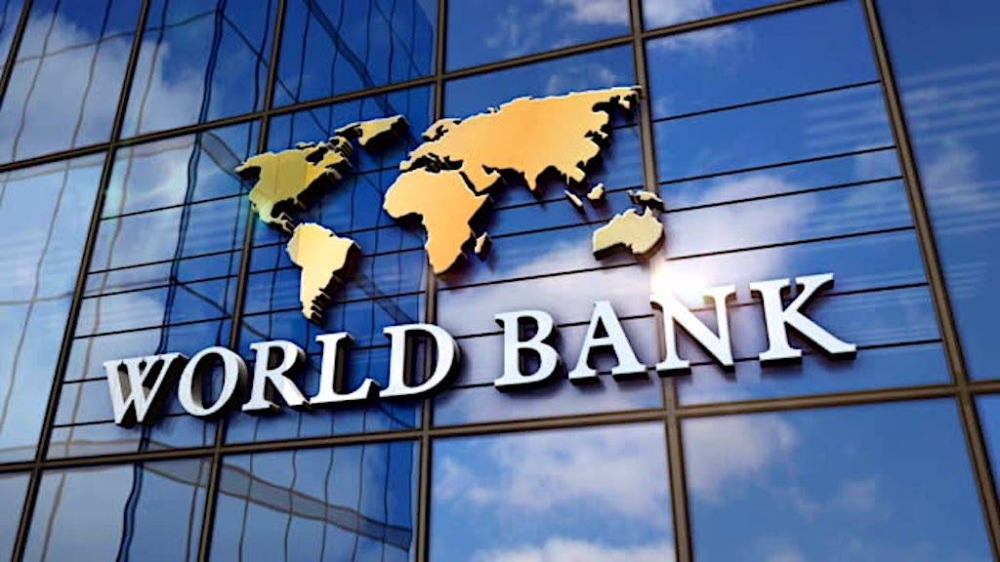Qatar
GCC steps help migrants remit money home: World Bank
Employment conditions for migrants were robust for the first months of 2022, boosted by labour shortages in the hospitality and health sectors of high-income countries, while windfalls tied to higher oil prices benefitted the GCC, which boosted demand for migrant labour

World Bank on glass building. Mirrored sky and city modern facade. Global capital, business, finance, economy, banking and money concept 3D rendering animation.
Migrants' ability to remit has been protected by GCC countries by ensuring low inflation through direct support measures, a World Bank affiliate said in a report.
Employment conditions for migrants were robust for the first months of 2022, boosted by labour shortages in the hospitality and health sectors of high-income countries, while windfalls tied to higher oil prices benefitted the Gulf Cooperation Council (GCC), which boosted demand for migrant labour from South and East Asia, noted The Global Knowledge Partnership on Migration and Development (Knomad), a World Bank initiative.
Growth in remittances is expected to fall to 2% in 2023, as GDP growth in high-income countries continues to slow (from a projected 2.4% in 2022 to 1.1% in 2023), further reducing migrants’ wage gains in host countries.
And downside risks, including a further deterioration in the war in Ukraine, volatile oil prices and currency exchange rates, and a deeper-than-expected downturn in major high-income countries, are substantial.
The growth of remittance flows into South Asia during 2023 is expected to slow to 0.7 percent, supported by India, the report said. The year will stand as a test for the resilience of remittances from white-collar South Asian migrants in high-income countries.
Higher inflation in the United States accompanied by an economic slowdown will soften remittance flows to India, with growth easing to 4%. The drop in oil prices from $98 to $85 per barrel (2002–03) combined with the decline in economic growth in the GCC will reinforce downward pressure on remittance flows to all South Asian countries.
According to the World Bank – Knomad report, remittance costs remained high during the second quarter of 2022, at twice the Sustainable Development Goal (SDG) target of 3%t. According to the World Bank’s Remittance Prices Worldwide Database, the global average cost of sending $200 was 6% in the second quarter of 2022, not very different from the previous year.
Among developing country regions, the cost was lowest in South Asia, at about 4.1%, while Sub-Saharan Africa continued to have the highest average cost, about 7.8%.
Latin America and the Caribbean experienced the largest increase in total average costs, up from 5.6% to 6%, followed by Europe and Central Asia and the Middle East and North Africa.
Meanwhile, the average cost of sending remittances to Sub-Saharan Africa, South Asia, and East Asia and the Pacific fell. But remittance costs across many African corridors and for small islands in the Pacific remain above 10%.
Banks continue to be the costliest channel for sending remittances, with an average cost of 11% during the second quarter of 2022; while post offices are recorded at 6.5%, money transfer operators at 5.2%, and mobile operators at 3.5%.
Mobile operations remain the cheapest type of service provider, but they account for a small part of total transaction volumes (less than 1%).
The burden of compliance with anti-money laundering and combating the financing of terrorism (AML/CFT) regulations continues to restrict new service providers’ access to correspondent banks.
These regulations also affect migrants’ access to digital remittance services, particularly for migrants who do not have IDs. Recognising small remittances as low-risk from the viewpoint of money laundering could increase migrants’ access to digital remittance services and promote financial inclusion.
That would also increase the access of new money transmitters to correspondent banking services and increase competition in the remittance markets, the World Bank – Knomad report showed.
Ends

